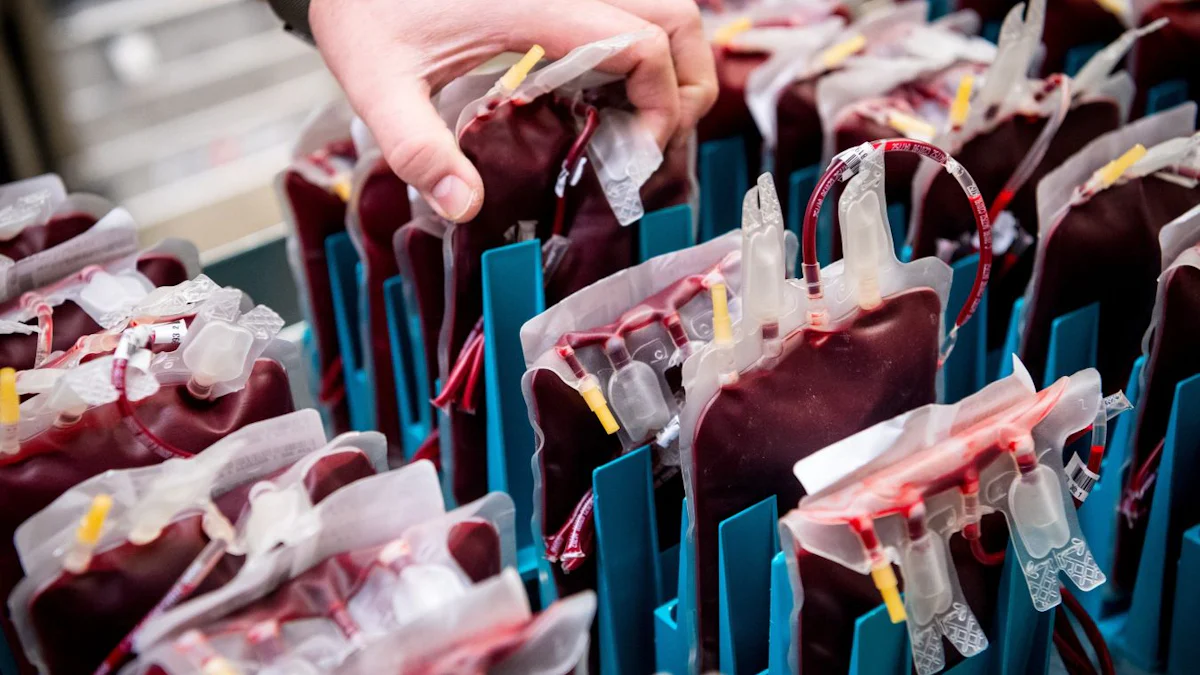If a patient receives a blood unit that does not match their blood type, the blood can clot, which is life-threatening. But there is one type of blood that is tolerated by most people, the blood type called 0 (“zero”). In the journal Nature Microbiology A group led by biotechnologist Maher Abou Hachem from the Technical University of Denmark in Lyngby now describes that they have succeeded in transforming blood samples from groups A or B into the universal blood group 0 using a mix of bacterial enzymes. This could simplify donor blood logistics, the team writes.
There is a chronic shortage in the blood banks. In particular, blood type zero, which is given whenever someone with an unknown blood type needs to be treated quickly, is in short supply. In this respect, a method to turn the restricted blood groups into those that can be used universally would be a great help. But researchers who were not involved in the study emphasize that the process is far from being there yet. “In my opinion, the study is of a purely academic nature,” says Thilo Bartolmäs, specialist in transfusion medicine and head of quality control for blood donations at the Charité in Berlin.
The idea of a universal blood group thanks to enzyme treatment is not entirely new. Other working groups have also already attempted conversion. There are more than three dozen different systems for classifying blood from different people. The AB0 system, originally developed by the Austrian hematologist Karl Landsteiner around 1900, is the most important in everyday clinical practice alongside the Rhesus classification. Sugar residues protrude from the surface of the red blood cells; Depending on the composition of these biochemical antennae, the blood groups are compatible with each other or not. For example, if A and B are mixed, they clump together. Type O blood does not have these problematic appendages, which is why it can be given to people with blood types A, B and AB.
For example, it is unclear how long the treated blood cells survive
Hachem’s group looked for enzymes in the human intestine that are able to shave off the sugar residues, so to speak. Bacteria live in the digestive tract and feed on mucus, which is made up of similar sugar molecules to the appendages of red blood cells. The team found what they were looking for in the microbe Akkermansia muciniphila: The bacterium produces enzymes that can digest such sugar compounds. Blood samples from groups A and B treated with these enzymes no longer clumped together when mixed together.
However, this discovery is not yet relevant for use in everyday clinical practice. It is unclear, for example, how long blood cells treated in this way survive and whether the remains of the shaved sugar molecules could come into conflict with the immune system of the recipient of such a blood donation. Data from the new study shows that this is not a theoretical problem. Some plasma samples reacted unexpectedly with the treated blood cells in laboratory tests. The cause must be determined “before the method can be used universally,” says Gregor Bein, director of the Institute for Clinical Immunology, Transfusion Medicine and Hemostaseology at the Justus Liebig University in Giessen.
:Promise of happiness ice bathing
Bathing in the ice barrel, in the frosty quarry pond or at least the cold shower in the morning: how healthy is that really?
Von Inga Rahmsdorf
The changes to the cell surfaces could also change the charge distribution there and therefore cause the blood to flow differently than usual. This could lead to problems, particularly in the smallest blood vessels. “All of this can only be investigated in animal experiments and ultimately in clinical studies on patients,” says Markus Müller, senior physician and head of the blood donation department at the Institute for Transfusion Medicine and Immunohematology of the DRK Blood Donation Service Baden-Württemberg.
The new study also leaves open how well the approach works with larger amounts of blood and whether the enzymes can still digest all sugar residues if they have to work in 250 milliliters and not just in reaction batches of 100 microliters in the laboratory. Finally, the thought of opening a blood bag to mix in enzymes makes transfusionists uncomfortable.
“We have been working in a closed system for years and decades to avoid bacterial contamination and have been very successful,” says Markus Müller. “Adding ‘non-human’ enzymes to a blood product could lead to life-threatening anaphylactic reactions in the transfusion recipient.” This means that the enzymes and possibly also the digestive products have to be removed from the blood bag afterwards. But this washing process is in turn harmful to the blood product, “so with the advantage of ABO universality we would potentially be buying into disadvantages in terms of the quality and survival time of the erythrocytes,” says Müller.
Mit Material des Science Media Center.
